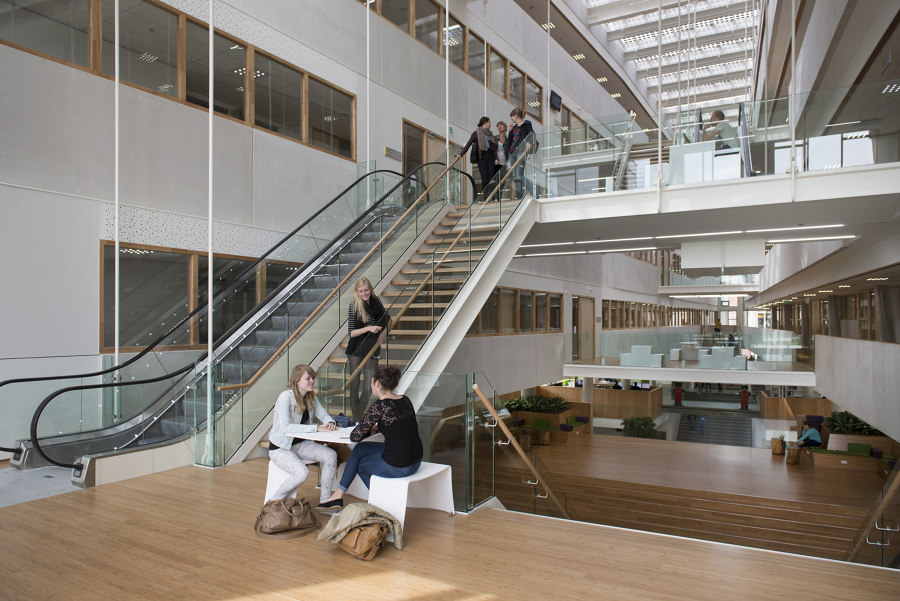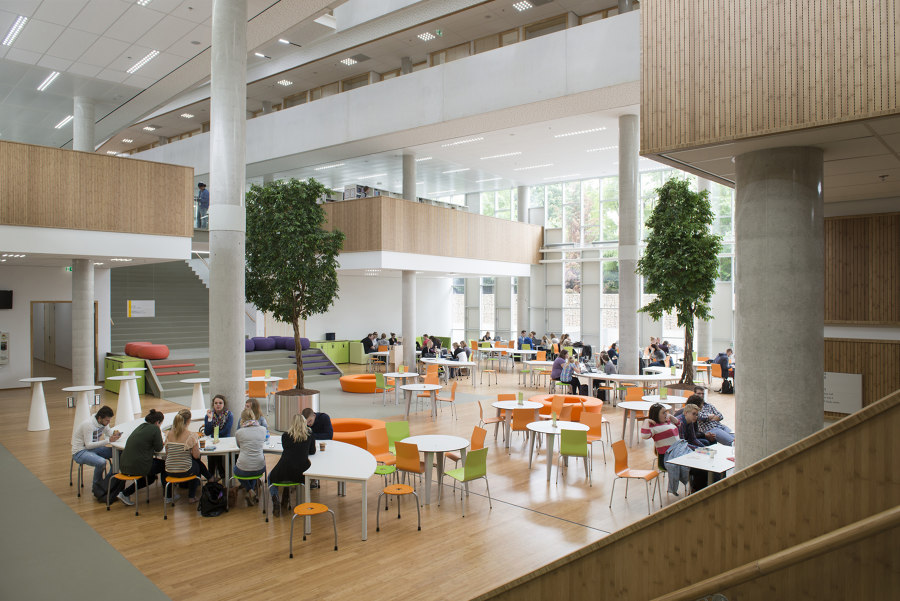Solar City Nijmegen has been enriched with the addition of a unique and sustainable building. The I/O building, which recently became the new home of the Faculty of Education of HAN University of Applied Sciences (HAN), it is the most sustainable academic building in the Netherlands, and it has won the solar tours trofee in 2014 and betonprijs in 2015.
The outward appearance of the building is determined by sustainability aspects, which also respect adjacent buildings. Sustainability is integrated at all levels and addresses environmental parameters such as water consumption, use of materials, air quality, acoustics, visual comfort and lighting. The result is an energy-efficient building that meets most of its own energy needs. A thermal energy storage system and solar panels on the roof actually deliver energy gains below the bottom line. This enables other buildings on the HAN campus to save on their energy bills.
The new building combines sustainability with educational comfort. The interior is dominated by natural materials, an abundance of daylight and subdued colours. This gives the building an open and well organised feel. A spacious atrium provides light and space and encourages users to interact. PV panels integrated in the glass roof of the atrium help shade out the sun.
Opportunities for encounter are concentrated on the ground floor, which houses a superb study and resource centre, the lobby and a study café. The different floors are connected by aerial walkways, which connect the upper floors. The floors of the building intersect, with each floor being projected or recessed. The resulting roof terraces create space for extra greenery on and around the building.
The staggered construction also ensures that homes adjacent to the north side of the building continue to receive the same influx of sunlight and daylight. LIAG believes that for construction to be sustainable, a building must create more biodiversity than it uses. Planting greenery in, around and on the building creates a new microclimate which serves as a new habitat for local flora and fauna.
The I/O building mainly contains educational and sports functions and provides excellent facilities for approximately 3,600 students. The building covers an area of 36,633 m2 (gross floor area), 16,641 m2 of which is used for educational purposes, and a three-level underground car park with 650 parking spaces.
The new I/O building is the capstone and most successful example of sustainability on the HAN campus in Nijmegen. Besides the fact that it is the most sustainable academic building in the Netherlands, the new I/O building is, first and foremost, a healthy building that is a pleasure to use.
Design Team:
LIAG architetcs: Arie Aalbers, Thomas Bögl, Erik Schotte, Bastiaan Bijloos, Harmen Landman and Hong Siem
Collaborators:
Advisor Constructions: Bouwadviesbureau Van der Ven
Advisor installations: DWA installatie- en energieadvies
Advisor building physics: DGMR



























